Heavy Rain Extended Hands-On
We get our hands on the latest preview build of Quantic Dream's upcoming story-driven thriller.
Heavy Rain is a game that defies definition. Combining a thrilling storyline with a heavily cinematic feel, it aims to conjure up the kinds of emotions elicited by a great film or one's own life experiences. Developer Quantic Dream has gone to extreme lengths to ensure that you aren't merely playing a game, but instead are participating in an absorbing emotional experience. That may sound a little contrived, perhaps even a little unbelievable, but from our latest hands-on, it's clear that Heavy Rain is unlike anything you've played before.
Fallout 4 Next Gen Update Comparison Stellar Blade - Hard Mode No Damage Abaddon Boss Gameplay Stellar Blade - (Almost) All Outfits Granblue Fantasy: Relink - New Content Trailer Modern Warfare III - New Season 3 Reloaded Modern Warfare Zombies Update River City Girls 2 - New Playable Characters DLC Reveal!! That Time I Got Reincarnated as a Slime ISEKAI Chronicles – Official Announcement Trailer MEGATON MUSASHI W: WIRED – Official OP “MUSASHI English Ver.” Trailer Stellar Blade - Official Launch Trailer | PS5 Games Gothic 1 Remake | Official Collector's Edition Trailer SaGa Emerald Beyond – Official Launch Trailer Paper Mario: The Thousand-Year Door – Official Switch Overview Trailer
Please enter your date of birth to view this video
By clicking 'enter', you agree to GameSpot's
Terms of Use and Privacy Policy
The focus of the game is on character interaction and behavioral choices rather than on all-out action. How you act towards others and the choices you make can dramatically affect the outcome of the game. It's even possible that one of the playable characters will die and you'll continue the story without that character. We encountered many different characters in Heavy Rain, though only four of them are playable. The main characters are the backbone of the game's story, and all of them will meet or interact at intersecting points. The story is adult-themed, dealing with murder, kidnapping, and even rape. It's told via cinematic visuals, which make it feel as though you are at the heart of a dramatic movie. Camera angles are carefully chosen to reflect the mood of a scene, with out-of-focus shots and wide-angle pans sprinkled liberally throughout. Most of the scenes look like they were filmed with a handheld camera, giving the game a gritty crime-thriller feel. There are also moments when the screen splits into several portions, showing multiple views of characters.
The control scheme is unique to the game and mostly involves a series of simple button presses and quick-time events. These are overlaid as white graphical instructions indicating which button or analogue stick movement is required to perform an action. For example, opening a door requires moving the analogue stick up and then to the right, as if you were using a door handle. The speed at which you make some movements can directly affect how a scene plays out and how characters react to you. If you quickly move the analogue stick to shut a door, it will slam, giving the impression of anger. Thoughts also play an important part, and by holding down L2 you can see them swirling around your character's head, with an icon to indicate which button to push to activate them. They can give clues as to what you should be doing or insight into the game's story.
We were lucky enough to play through the first 11 scenes in the latest preview build of the game. Please note that because of the story-driven nature of the game, the following contains spoilers.
Heavy Rain kicks off with a prologue-cum-tutorial, where you take on the role of Ethan Mars, an architect with a wife, two children, and a house that seems to have been designed entirely by Ikea. The opening scene sees Ethan sprawled out on the bed, with the screen splitting into six sections, showing various angles of the sleeping protagonist in the sun-drenched room. You are also introduced to the main musical theme that runs throughout the game--a piano-led piece that holds plenty of sadness within its chords. After getting Ethan up, showered, and dressed, we walk downstairs; one thought tells us we should probably get on with some work, though another thought wants us to hang out in the garden. Ethan either indulges in some architectural drawing or simply lies down in the garden until his wife arrives home.
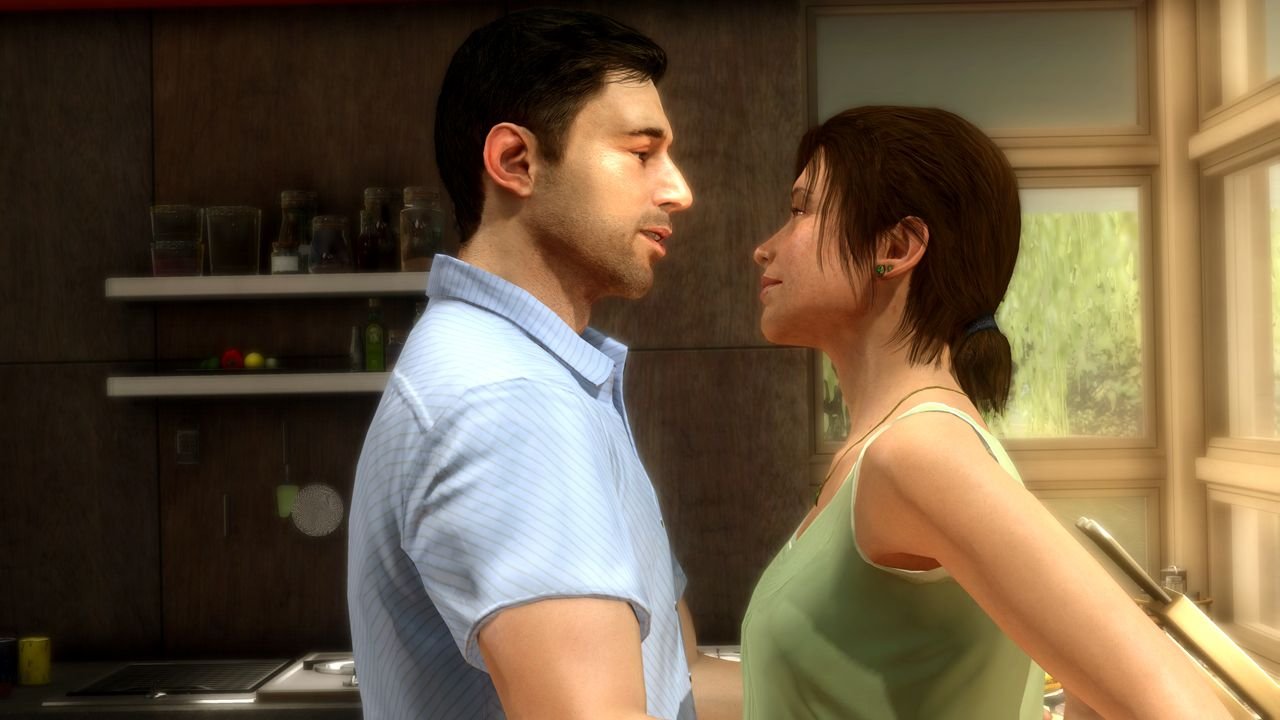
Upon Mrs. Mars' arrival, we find out that it is our son Jason's 10th birthday, and she's preparing for his birthday party. We help bring in the shopping and lay the table, and we even give Mrs. Mars a passionate kiss. We also play games with the kids out in the garden, spinning them around, carrying them on our shoulders, and even engaging in toy swordfights with them. Though these actions are seemingly mundane, they help to build up an emotional attachment to the characters.
The next scene sees us in a busy shopping mall, where we are looking after Jason. He nags us to buy him a balloon, and we inevitably give in. This leads to the first heart-wrenching scene in the game, because while we're paying for the balloon, Jason wanders off into the crowd. With the camera focused on Ethan, you see Jason slowly wander off into the periphery with his red balloon slowly fading away. As we start to look for him, the music picks up, getting more dramatic as the scene plays out.
We push Ethan through the crowds, just looking for any sign of the red balloon as we shout out Jason's name repeatedly. The crowd gets thicker, and it gets more difficult to push through. We suddenly find ourselves on the edge of our seats, anxious that we may not find him. Eventually, we find Jason outside the mall, on the opposite side of the road. As Ethan calls out to him, a car approaches, and Jason runs into the road. Ethan leaps out to try to save him from the oncoming car, but they both get hit, and his wife screams out in agony as she sees them both get hurt. The red balloon slowly rises into the sky and the scene finishes.
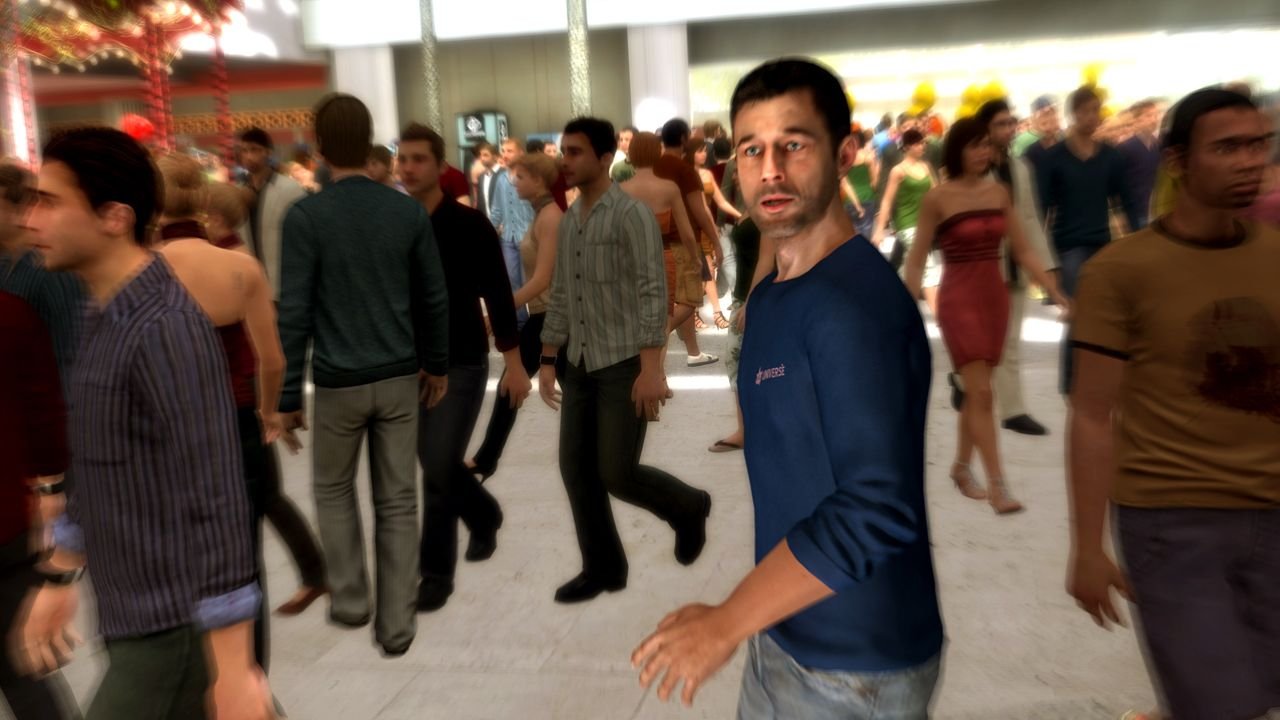
The tone of the game then changes dramatically as the intro credits roll, with developer and voice actors' names interspersed across the now rain-soaked city. A series of wet faces are shown, showcasing the immense amount of detail that has gone into the facial animations. When it's over, we take control of Ethan once again, this time looking like a broken man--unshaven, living in a dingy house, and with a look of immense pain and unhappiness on his face. We find ourselves trying to rebuild Ethan's relationship with his remaining son, Shaun, more of which you can read about in our previous preview.
We then take control of Detective Shelby, a private investigator researching the Origami Killer. His car pulls up next to a run-down inner-city motel, where he's aiming to question Lauren Winter, a prostitute who has lost her son to the murderer. Though she is reluctant to talk about her son's murder, we are presented with various conversational options with which to convince her. We can sympathise with her, send her on a guilt trip by mentioning other children who have disappeared, or simply try to force the information out of her. We choose to send her on a guilt trip. She eventually gives in, and we are able to choose from a set of questions to ask. However, we aren't able to ask her everything, as questions must be chosen quickly during conversations.
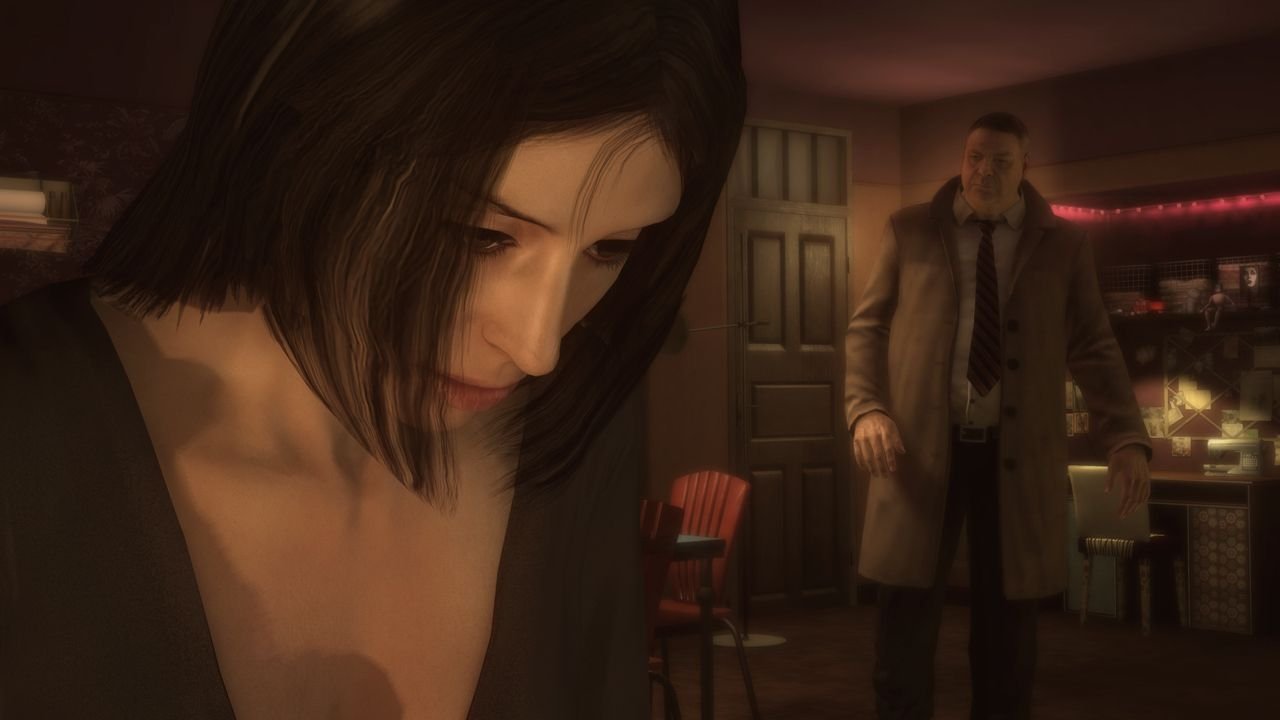
At the end of the questioning, Lauren asks Shelby to leave. Upon entering the hallway outside her room, Detective Shelby suffers an asthma attack. We have to quickly pull an inhaler out of our pocket. The quick-time button icons are blurry, disappearing in and out of view, indicating the distress that Shelby is in. After recovering, we hear screams from Lauren's room and break the door in to find her being beaten up by an old client. This brings us to the first fight scene in the game. Combat is also handled by quick-time events, and the speed at which commands have to be entered gives us a sense of fear and urgency as we fight off our attacker. Missing a button press gives our opponent the upper hand, allowing him to land a few punches. The camera cuts rapidly during the fight, much like a scene from a classic action film. We are thrown around the motel room and are smashed into glass, and we have to use household objects as weapons. We eventually dispatch our assailant, after which Lauren thanks us and we leave the building.
The third character in the game is Norman Jayden, an FBI agent with a drug addiction. We are at a crime scene where the Origami Killer has struck again, killing another young boy. The scene has already been infiltrated by the press, with journalists scattered around and commenting on the murder. It's here that we are first able to use the Added Reality Interface. The ARI is a pair of glasses that adds a heads-up display to Jayden's surroundings, allowing him to detect and analyse evidence. Walking around the crime scene, we find traces of blood, footprints, tyre tracks, and pollen from an orchid plant--a calling card for the Origami Killer. We also chat to Lieutenant Blake, the police officer in charge of the investigation. He seems less than happy to be speaking to us, but he does furnish us with information on the case and past evidence the police have gathered.
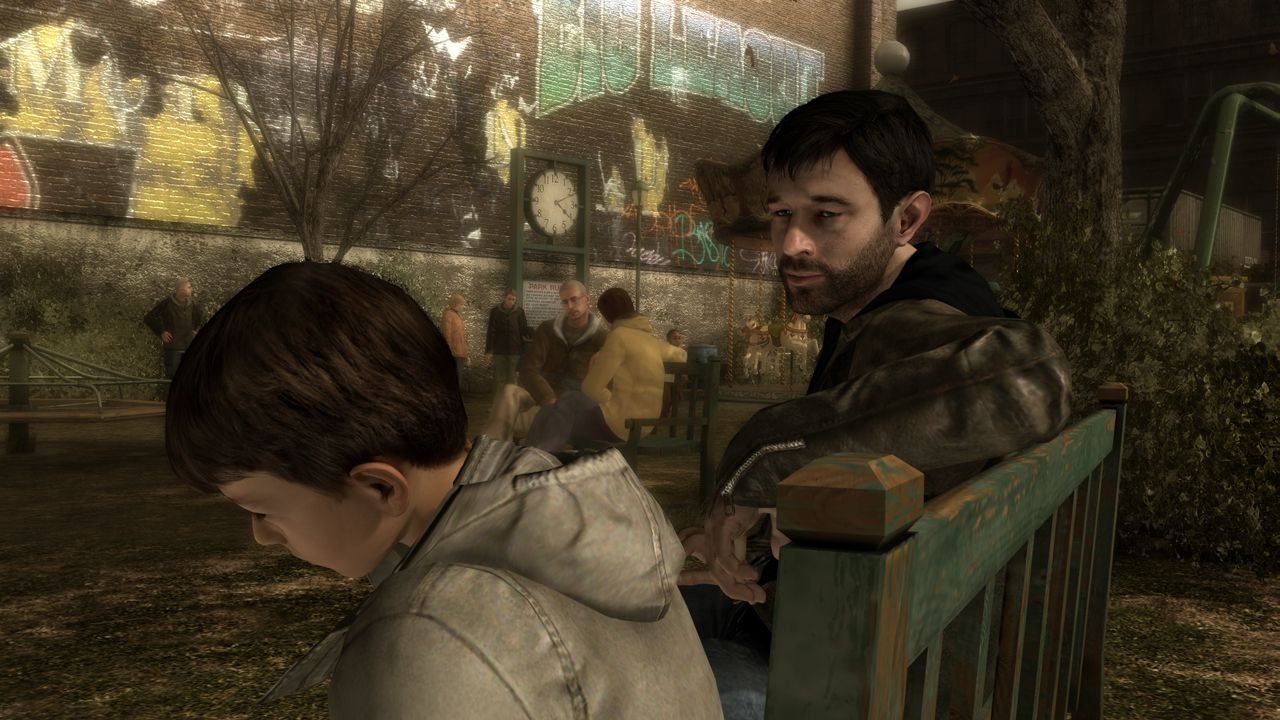
The next scene puts us back in control of Ethan. We are in the park with an unhappy-looking Shaun and try to cheer him up by playing on the merry-go-round, the swings, and the seesaw. Shaun asks to ride the carousel, and while he's on it, Ethan blacks out. When he comes around, he is alone in the middle of a road. We get him up and proceed to look for Shaun. After frantically running around looking for him, it dawns on Ethan that his son is gone. He falls to his knees, crying in anguish and getting soaked in the rain as he finds that an origami figure has been placed in his hand.
At this point the game cuts back to Jayden. We are in the police station awaiting an appointment with Captain Perry. We find out that he has assigned us to the Origami Killer case, citing pressure from the media as his reason for getting the FBI involved. Perry's secretary, Charlene, takes us to our office, which is effectively just a large cupboard. It is here that we see more of the ARI's functions. We are able to virtually convert the room into a Martian planet or a location under the sea, which helps Jayden concentrate on analysing case files and on using virtual maps to find out where evidence has originated from.
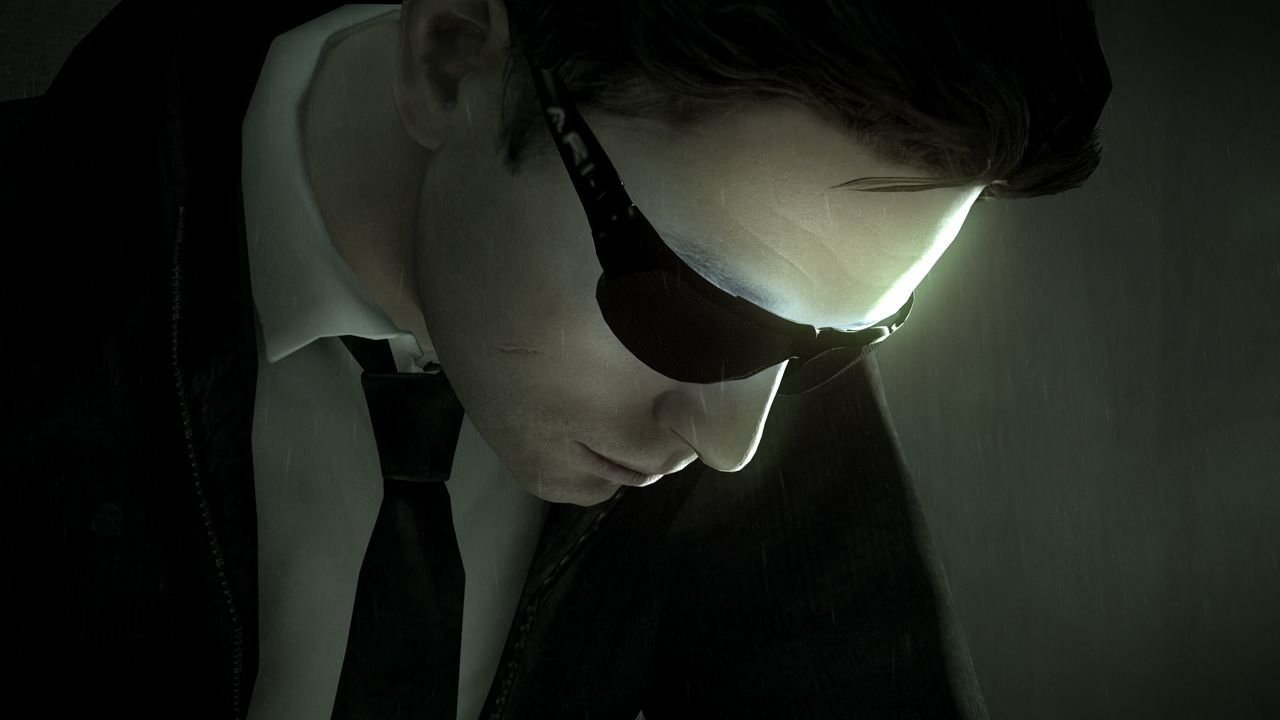
Jayden's drug addiction rears its ugly head when he suddenly starts shaking uncontrollably. You have the option to take a drug called Trip To or try to resist and get a drink of water to calm your nerves. The button actions are also blurred and shaking, and if you try to make it to the watercooler, they get harder and harder to see, indicating Jayden's deteriorating condition. Ethan also makes an appearance in the police station, reporting his son missing. The following scene sees Mrs. Mars in tears, knowing that she has now lost both of her sons, and she lashes out at Ethan in her grief.
The final scene puts us in the shoes of the fourth character, Madison Paige, a journalist researching the Origami Killer. Madison suffers from insomnia, and after she wakes up in her apartment, we try to get her to nod back off to sleep by first taking a hot shower. When we emerge from the shower, it's clear that something is amiss. A creepy figure keeps darting around the screen, which Madison first dismisses as her imagination. When we try to get back into bed, a masked assailant attacks us, leading to another dramatic fight scene. As soon as we fight off our attacker, another appears, and we are left helpless as to how we can fight him off.
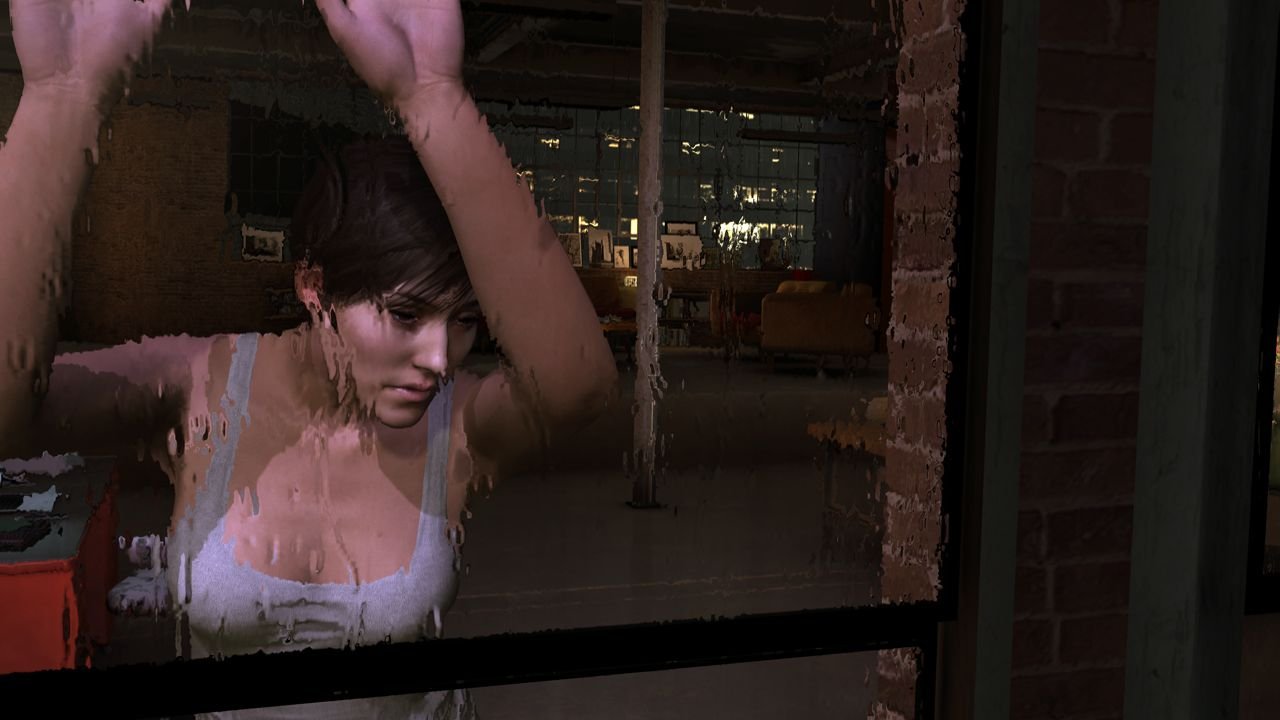
With that, our time with Heavy Rain draws to a close. The game is shaping up to be an incredibly emotional experience. Though many actions are controlled by quick-time events, you never feel as though you are anything but fully in control of the characters. The decisions you make are reflected throughout the course of the game, and the focus on story is refreshing. The game is also graphically stunning. Facial animations reach levels of realism that were once just the subject of PlayStation 3 tech demos. We have yet to see much of how the characters cross paths or how linear the gameplay will be. There are many great ideas on show, and the storyline and cinematics are so rich that it's easier to compare the game to movies such as Seven and L.A. Confidential than to other video games. Heavy Rain is scheduled for release in early 2010 on the PlayStation 3.
Got a news tip or want to contact us directly? Email news@gamespot.com
Join the conversation